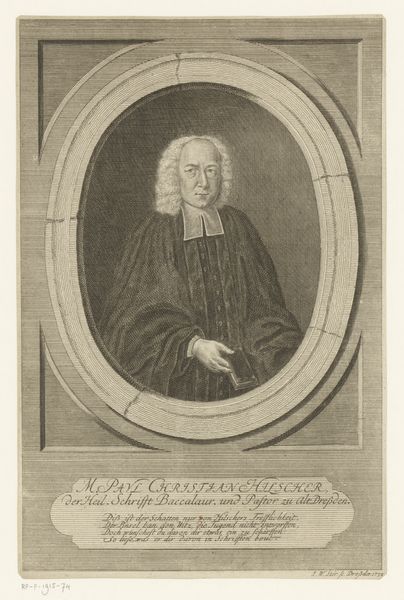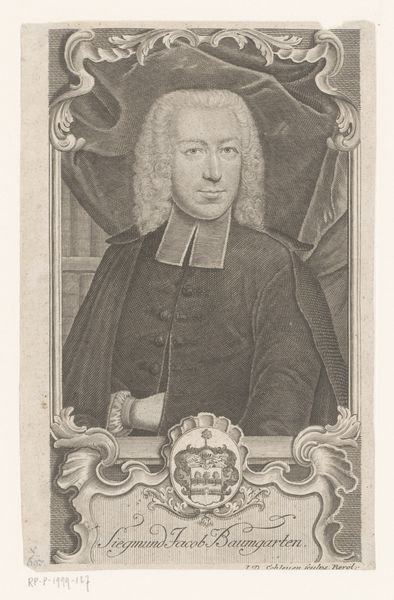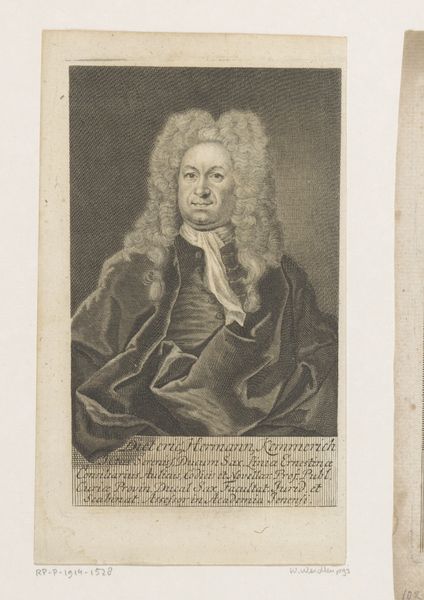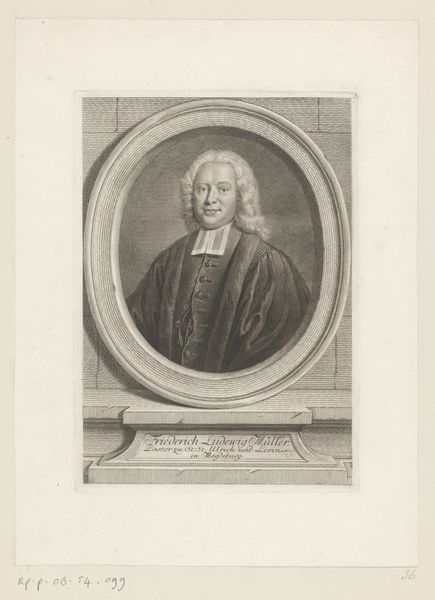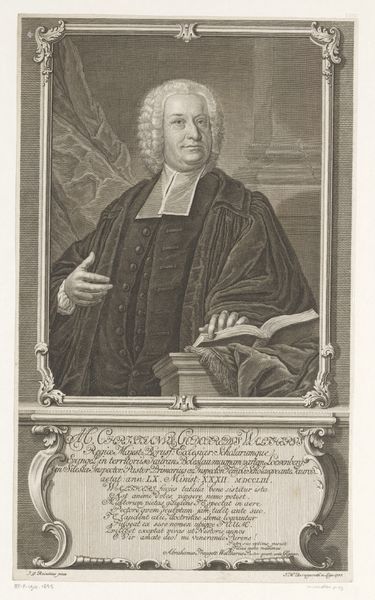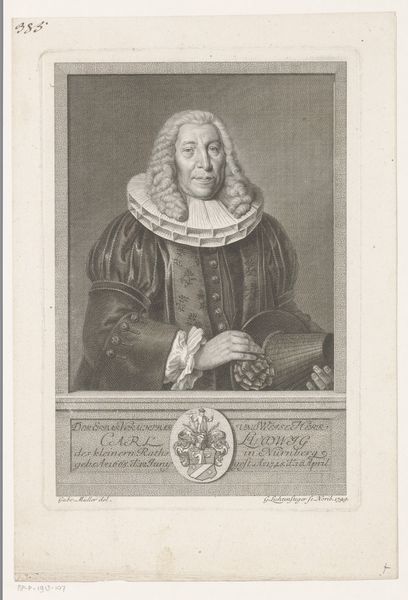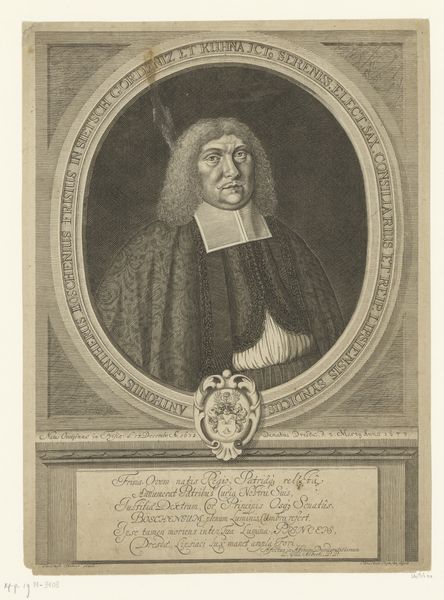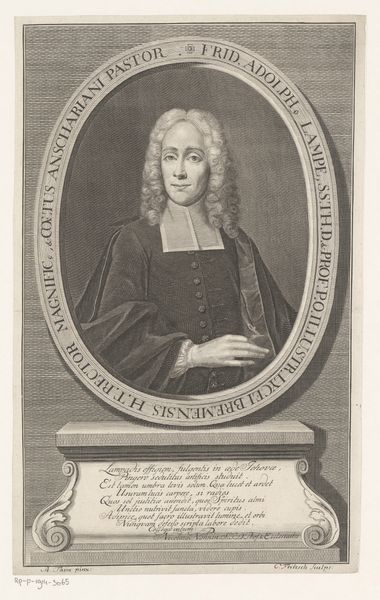
print, engraving
#
portrait
#
baroque
# print
#
old engraving style
#
historical photography
#
history-painting
#
engraving
Dimensions: height 348 mm, width 218 mm
Copyright: Rijks Museum: Open Domain
Curator: Here we have a print titled "Portret van Johann Julius Struve," created in 1748. It's currently held in the Rijksmuseum. What strikes you about it initially? Editor: The level of detail achieved with engraving is remarkable, and how it allows such precise delineation of texture, in both the face and the ornateness of the oval framing it. But the mood...melancholy? There is something both stern and kindly in the Reverend Struve's presentation. Curator: Well, Schleuen, the artist, aimed to present Struve within a very specific cultural context. As a prominent theologian and a preacher in Magdeburg, his vestments, bearing, and the very inscription beneath the portrait all work together to solidify his status. What's particularly interesting is that, because the prints could be replicated cheaply, these portraits functioned as both honorific and propaganda pieces of sorts for the church and the individuals depicted. Editor: The semiotic construction is clever. The use of Latin in the cartouche at the base suggests not only Struve's intellect but also signals to a learned, elite audience, further enhancing the perception of prestige. And that gesture of his hand! It feels like an oratorical pose, mid-sermon maybe, as he seeks to drive home his point with measured calm. The light is positioned so it brings out this expression while also calling attention to the wig. Curator: Precisely! Think about the laborious work, and the cost that would entail to emulate this hair with one's natural locks! These pieces reinforce notions of class. The labour involved in producing this print—the time invested in such painstaking detail with such expensive materials, contributes to the glorification not just of Struve, but of the social order itself. And by owning the prints you take a place in this network. Editor: Absolutely. And to close, observing the use of shading, notice how strategically it's deployed to add volume, to guide the eye towards Struve’s face, to highlight specific textual elements...It elevates the artwork to be more than just informative to something subtly affecting. Curator: Indeed, and when we look at how engravings circulated so widely in the 18th century, portraying not just elites but all types of people at different socio-economic status, these types of prints act as markers of identity and of social cohesion.
Comments
No comments
Be the first to comment and join the conversation on the ultimate creative platform.
